Discover the perfect blend of style and comfort with floor bed designs that can transform your room into a cozy sanctuary. Floor beds are not just a trend; they represent a lifestyle choice that prioritizes simplicity, comfort, and aesthetic appeal. This article delves into various innovative ideas and practical tips for creating a floor bed setup that enhances your living space.
What is a Floor Bed?
A floor bed is a minimalist bedding option that rests directly on the floor, providing a unique and inviting sleeping arrangement. Unlike traditional beds, floor beds eliminate the need for bulky frames, allowing for a more open and airy feel in your room. This approach is especially beneficial in modern living, where maximizing space is essential.
Benefits of Using Floor Beds
- Space Efficiency: Floor beds are ideal for small apartments or minimalist designs, as they save valuable floor space.
- Enhanced Comfort: With a variety of mattress options available, floor beds can cater to diverse sleeping preferences.
- Accessibility: The low profile of floor beds makes them easy to get in and out of, which is particularly advantageous for children and the elderly.
Stylish Floor Bed Design Ideas
To make your floor bed a focal point in your room, consider these design styles:
- Bohemian Style: Incorporate vibrant textiles, layered rugs, and colorful cushions to create an inviting atmosphere that reflects your personality.
- Minimalist Design: Choose a simple mattress with neutral bedding and a few accent pillows to align with minimalist principles.
Choosing the Right Mattress for Floor Beds
Selecting the appropriate mattress is crucial for ensuring a restful night’s sleep. Here are some considerations:
- Types of Mattresses: Memory foam, latex, and futon mattresses are popular choices for floor beds, each offering unique benefits.
- Thickness and Firmness: Consider your sleeping style when choosing the thickness and firmness of your mattress to optimize comfort.
Decorating Around Floor Beds
Creating a cohesive look around your floor bed can enhance the overall aesthetic of your room. Here are some tips:
- Textiles and Color Schemes: Select bedding and decor that complement each other, using a harmonious color palette to create a soothing environment.
- Incorporating Natural Elements: Add plants and organic materials to your decor to foster a cozy and inviting atmosphere.
Maintenance Tips for Floor Beds
Proper maintenance is essential for the longevity of your floor bed. Here are some practical tips:
- Regularly vacuum your mattress and surrounding area to keep dust and allergens at bay.
- Consider using a mattress protector to safeguard against spills and stains.
- Rotate your mattress periodically to ensure even wear and prolong its lifespan.
By incorporating these stylish and functional floor bed designs into your space, you can create a cozy atmosphere that reflects your personal style while maximizing comfort and accessibility.

What is a Floor Bed?
A floor bed is a minimalist bedding option that sits directly on the floor, providing a unique and cozy sleeping arrangement. Unlike traditional beds that require a frame and elevated structure, floor beds embrace a more grounded approach to sleeping, which can significantly enhance the overall ambiance of a room. This section delves into the concept of floor beds, exploring their design, functionality, and the benefits they bring to modern living.
Originating from various cultural practices, floor beds have gained popularity in contemporary interior design, particularly among those who value simplicity and minimalism. A floor bed consists of a mattress placed directly on the floor, often accompanied by decorative elements such as cushions, throws, and bedding that enhance its aesthetic appeal. This design allows for a cozy and inviting atmosphere, making it an ideal choice for those looking to create a serene sleeping environment.
One of the most significant advantages of floor beds is their space-saving capability. In urban settings where living spaces are often limited, floor beds can maximize available square footage while maintaining a stylish look. They can easily fit into small rooms, allowing for a more open and airy feel. This is particularly beneficial for studio apartments or shared spaces where every inch counts.
Furthermore, floor beds offer flexibility in layout. Unlike traditional beds, which can dominate a room, floor beds allow for versatile arrangements. You can create a more dynamic layout by placing furniture around the bed without the constraints of a bed frame. This adaptability can lead to a more functional living space that meets your specific needs.
Comfort is another hallmark of floor beds. The absence of a frame allows for a more natural sleeping position, which can be adjusted according to personal preference. Many people find that sleeping closer to the ground provides a sense of stability and comfort. Additionally, floor beds can accommodate various mattress types, including memory foam, latex, and futons, allowing individuals to choose the best option for their sleeping style.
Incorporating a floor bed into your home can also foster a relaxed lifestyle. The simplicity of a floor bed encourages a minimalist approach to living, promoting mindfulness and reducing clutter. This design choice aligns perfectly with the growing trend of decluttering and simplifying one’s life, making it an appealing option for many.
In summary, a floor bed is more than just a bedding option; it’s a lifestyle choice that embodies comfort, functionality, and style. By embracing this minimalist design, you can transform your living space into a cozy sanctuary that reflects your personal taste while maximizing comfort and accessibility.
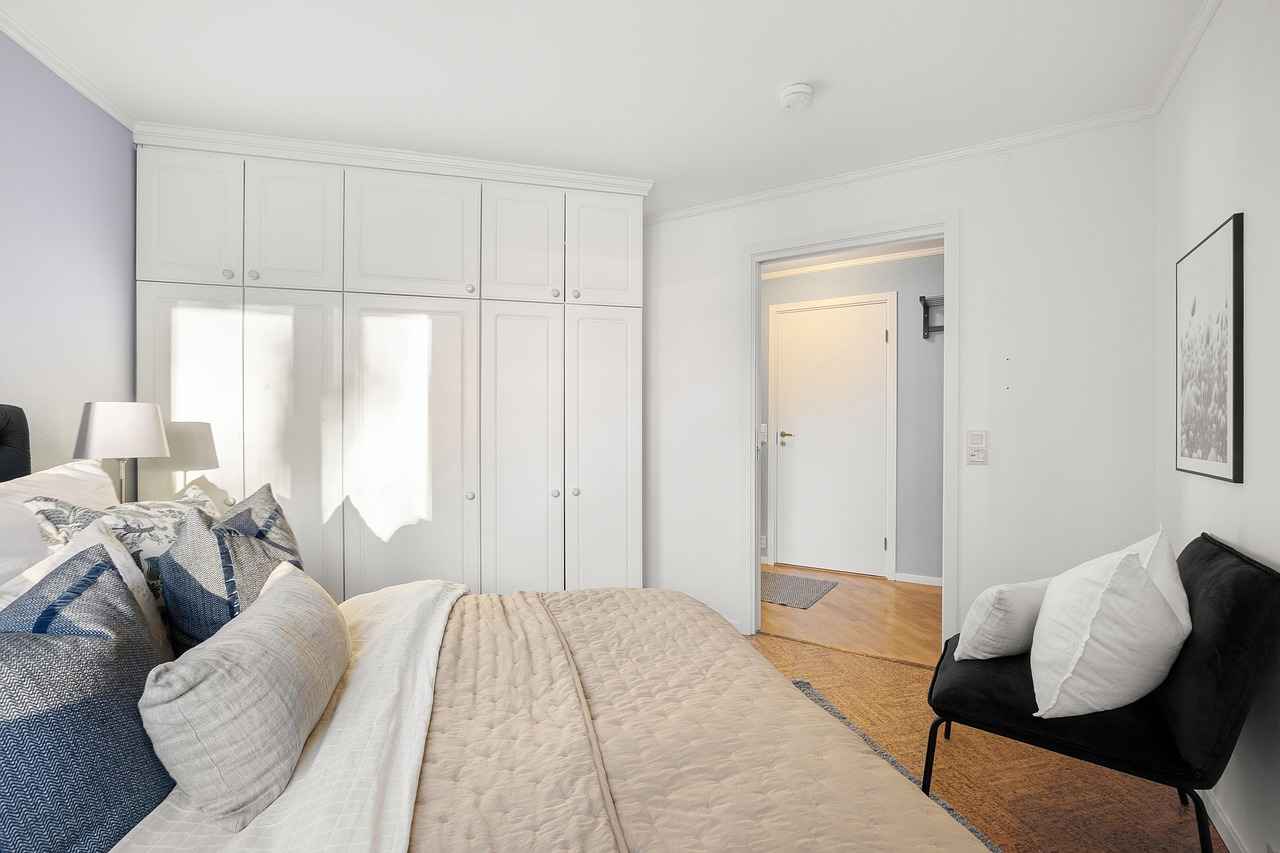
Benefits of Using Floor Beds
Floor beds have gained popularity in modern interior design, and for good reason. They offer a multitude of benefits that can significantly enhance your living space. In this section, we will delve into the advantages of using floor beds, highlighting how they can promote a relaxed lifestyle while maximizing comfort and accessibility.
One of the most notable benefits of floor beds is their ability to save space. By positioning the bed directly on the floor, you eliminate the need for bulky bed frames and headboards. This design choice is especially advantageous for those living in small apartments or minimalist spaces. Floor beds allow for a more open and airy feel, making the room appear larger than it is. You can also easily rearrange furniture around a floor bed, creating a fluid layout that can adapt to your lifestyle.
Floor beds provide a unique level of comfort that can cater to various sleeping preferences. For individuals who enjoy a low-profile sleeping arrangement, a floor bed can be an ideal choice. Additionally, the accessibility of floor beds makes them suitable for people of all ages, including children and elderly individuals. The absence of a raised frame means that getting in and out of bed is easier, reducing the risk of falls or injuries.
Incorporating a floor bed into your living space can contribute to a more relaxed lifestyle. The minimalist aesthetic encourages decluttering and simplicity, which can reduce stress and promote a sense of calm. Furthermore, floor beds often encourage a more casual approach to sleeping, allowing you to enjoy a cozy atmosphere that feels inviting and unpretentious.
Floor beds seamlessly integrate into various design styles, from bohemian to minimalist. This versatility allows you to express your personal taste while enjoying the practical benefits of a floor bed. You can accessorize your floor bed with vibrant textiles, cushions, and throws to create a warm and inviting space that reflects your style.
Another advantage of floor beds is the potential for improved airflow. Traditional bed frames can sometimes trap heat and restrict airflow beneath the mattress. By placing your mattress directly on the floor, you may experience better ventilation, which can help regulate temperature and contribute to a more comfortable sleeping environment.
Sleeping closer to the ground can also have a grounding effect, both physically and mentally. Many people find that being closer to nature fosters a sense of connection and tranquility. This practice can enhance your overall well-being, making floor beds an appealing option for those seeking a more holistic lifestyle.
Floor beds can also serve multiple purposes beyond just sleeping. They can be transformed into cozy lounging areas during the day, ideal for reading, relaxation, or socializing with friends and family. This multifunctionality makes them a practical addition to any living space.
In summary, floor beds offer a range of benefits that can transform your living space into a comfortable and inviting sanctuary. From maximizing space to promoting a relaxed lifestyle, these beds are a versatile choice for modern living. Whether you are looking to enhance your interior design or improve your overall well-being, floor beds provide an excellent solution that caters to various needs and preferences.
Space-Saving Solutions
When it comes to maximizing space in a home, floor beds emerge as a practical solution that harmonizes aesthetics and functionality. These beds, which rest directly on the floor, offer a plethora of benefits, particularly for those living in small apartments or embracing a minimalist lifestyle. In this section, we will delve into how floor beds can transform your living area into a more spacious and inviting environment.
One of the standout advantages of floor beds is their ability to maximize room dimensions. Unlike traditional beds that require frames and additional space, floor beds occupy less vertical space, creating an illusion of openness. This is particularly beneficial in compact areas where every inch counts. By eliminating bulky frames, floor beds allow for a more streamlined look, making rooms feel larger and more airy.
For those living in small apartments, floor beds can be a game changer. They can seamlessly fit into tight corners or serve as a focal point in a minimalist design. With the right arrangement, a floor bed can coexist with other furniture pieces without overwhelming the space. For example, pairing a floor bed with multifunctional furniture, such as storage ottomans or foldable desks, can enhance both style and utility.
Floor beds also provide flexible layout options. Since they do not have a fixed structure, you can easily rearrange your room to suit your needs. This adaptability allows you to experiment with different configurations, whether you prefer a cozy nook or an open layout. Moreover, floor beds can be positioned against walls or in the center of the room, depending on your desired aesthetic.
In addition to their practical benefits, floor beds contribute to an open and airy atmosphere. By minimizing visual clutter, they help create a serene environment that promotes relaxation. To enhance this effect, consider using light-colored bedding and accessories. Soft, neutral tones can reflect light and make the space feel even more expansive.
Another effective way to maximize space with floor beds is by incorporating storage solutions. Under-bed storage boxes or drawers can be a perfect complement to a floor bed setup. This not only keeps your living area organized but also utilizes the space beneath the bed efficiently. By storing seasonal clothing, extra linens, or books, you can maintain a tidy environment while making the most of your available space.
In summary, floor beds are a remarkable solution for those looking to save space without sacrificing style or comfort. Their ability to maximize room dimensions, provide flexible layout options, and create an open atmosphere makes them ideal for small apartments and minimalist designs. By thoughtfully incorporating storage solutions and maintaining a cohesive aesthetic, you can fully embrace the benefits of floor beds in your home.
Ideal for Small Rooms
In today’s fast-paced world, many individuals and families find themselves living in compact spaces. As the trend towards smaller living areas continues, the need for efficient and stylish solutions becomes paramount. One such solution is the floor bed, which not only maximizes space but also enhances the overall aesthetic of a room.
Floor beds, by their very design, sit directly on the ground, which can create an open and airy atmosphere in small rooms. This unique arrangement allows for greater flexibility in room layout, making it easier to navigate and enjoy the space. When integrated thoughtfully, floor beds can serve as a stunning focal point while providing a cozy sleeping environment.
Here are some practical ways to incorporate floor beds into small rooms:
- Utilize Multi-Functional Furniture: Pair your floor bed with furniture that serves multiple purposes, such as ottomans that double as storage or a desk that can be folded away. This approach maximizes functionality without overcrowding the space.
- Choose Light Colors: Opt for light-colored bedding and decor to enhance the feeling of spaciousness. Soft whites, pastel shades, and light neutrals can reflect natural light, making the room feel larger and more inviting.
- Incorporate Vertical Storage: Use wall-mounted shelves or tall bookcases to draw the eye upward, creating the illusion of height. This strategy helps keep the floor area clear, contributing to a more open feel.
- Keep the Area Minimalist: Less is more in small spaces. Limit the number of decorative items around the floor bed to avoid clutter. A few well-chosen pieces can add character without overwhelming the room.
When selecting a floor bed for a small room, consider the size and scale of the mattress. A low-profile mattress can enhance the minimalist aesthetic while ensuring comfort. Additionally, incorporating soft textiles, such as plush rugs and layered blankets, can create a warm and inviting atmosphere.
Another advantage of floor beds is their accessibility. They are especially beneficial for individuals with mobility challenges, as they eliminate the need for climbing into a traditional bed. This feature makes them an excellent choice for children and elderly individuals alike.
Moreover, floor beds can seamlessly blend with various design styles. Whether you prefer a bohemian vibe with colorful textiles and patterns or a sleek, modern aesthetic with clean lines and neutral tones, floor beds can adapt to your vision. By selecting the right bedding and accessories, you can create a unique sleeping area that reflects your personal style.
In conclusion, floor beds offer a practical and stylish solution for small living spaces. They not only save space but also enhance the room’s overall design. By thoughtfully integrating a floor bed into your compact room, you can achieve a cozy, functional, and aesthetically pleasing environment that caters to your lifestyle needs.
Flexible Layout Options
are one of the most appealing aspects of incorporating a floor bed into your living space. Unlike traditional beds that require a specific amount of space and orientation, floor beds offer a unique opportunity to rethink how you arrange your room. This flexibility can lead to a more functional and visually appealing environment.
When arranging furniture around a floor bed, consider the following strategies:
- Utilize Multi-Functional Furniture: Incorporate pieces that serve multiple purposes. For example, a storage ottoman can provide seating, a footrest, and hidden storage for blankets or books.
- Embrace Open Space: Floor beds can create a sense of openness. Position your bed in a way that allows for easy movement around the room. This can also make the space feel larger and more inviting.
- Zone Your Space: Use rugs to define different areas within the room. A soft area rug under the floor bed can create a cozy sleeping zone, while another rug can delineate a reading nook or workspace.
- Consider the Flow: Arrange furniture in a way that promotes a natural flow. Avoid blocking pathways, and ensure that there is enough space to walk around the bed comfortably.
- Incorporate Vertical Elements: Utilize wall-mounted shelves or tall plants to draw the eye upward, creating a sense of height and space. This can help balance the low profile of a floor bed.
Additionally, think about the color scheme and textiles you choose. Light colors can enhance the feeling of space, while darker tones can create a cozy atmosphere. Layering different textures, such as soft throws and plush pillows, can add depth and warmth to the overall design.
Another important aspect is the lighting. Use a combination of ambient, task, and accent lighting to create a well-lit and inviting environment. Floor lamps or string lights can add a touch of charm and make the area around the floor bed feel more welcoming.
When it comes to visual appeal, consider the symmetry of your arrangement. Placing bedside tables or lamps on either side of the bed can create a balanced look. However, asymmetrical arrangements can also be visually interesting, especially when combined with unique decor items.
Lastly, don’t forget the importance of personal touches. Add artwork, photographs, or decorative items that reflect your personality and style. This will not only enhance the visual appeal but also make the space feel more like home.
In summary, floor beds offer a versatile foundation for creative room layouts. By utilizing multi-functional furniture, embracing open spaces, and carefully considering color, lighting, and decor, you can create a functional and aesthetically pleasing environment that maximizes the benefits of a floor bed.
Enhanced Comfort and Accessibility
When it comes to sleep, comfort and accessibility are paramount. Floor beds offer a unique solution that caters to various sleeping preferences and lifestyles. This section delves into how floor beds enhance comfort and accessibility, making them an ideal choice for many.
A floor bed is not just a bed; it’s a versatile sleeping arrangement that can adapt to your personal needs. One of the most significant advantages of floor beds is their ability to provide easy access. For individuals with mobility challenges, a floor bed eliminates the need to climb into a traditional bed, making it easier to get in and out. This accessibility is particularly beneficial for children, elderly individuals, or anyone recovering from an injury.
Additionally, floor beds can be customized to suit various sleeping preferences. Whether you prefer a firm surface or a softer mattress, floor beds can accommodate different types of mattresses, such as memory foam, latex, or futons. This flexibility allows you to choose what feels best for your body, promoting a restful night’s sleep.
Moreover, the minimalist design of floor beds contributes to a sense of openness in your living space. This can be especially advantageous for those who enjoy a clutter-free environment. The absence of a traditional bed frame allows for a more spacious feel, which can be calming and conducive to relaxation. In smaller rooms, this can create an illusion of more space, enhancing the overall aesthetic of the area.
Another aspect to consider is how floor beds can be integrated into various lifestyles. For example, minimalists may appreciate the simplicity and functionality of a floor bed, while those with a more eclectic style can use it as a canvas for creative decor. By pairing a floor bed with colorful bedding, cushions, and throws, you can create a cozy and inviting atmosphere that reflects your personality.
Furthermore, floor beds are often more affordable than traditional bed frames and mattresses. This cost-effectiveness makes them an attractive option for students, young professionals, or anyone looking to save money without sacrificing comfort. With a variety of budget-friendly mattress options available, achieving a comfortable sleep setup is more accessible than ever.
In terms of maintenance, floor beds are generally easier to clean. Without a bulky frame, dust and allergens are less likely to accumulate, promoting a healthier sleeping environment. Regularly changing bedding and vacuuming the area around the bed can ensure that your sleeping space remains fresh and inviting.
In conclusion, floor beds offer a unique blend of comfort and accessibility that caters to a wide range of sleeping preferences and lifestyles. Their minimalist design, coupled with the ability to customize mattress options, makes them an excellent choice for anyone looking to enhance their sleeping experience. Whether you are seeking a solution for mobility issues, a more spacious living area, or simply a comfortable place to rest, floor beds can meet your needs effectively.
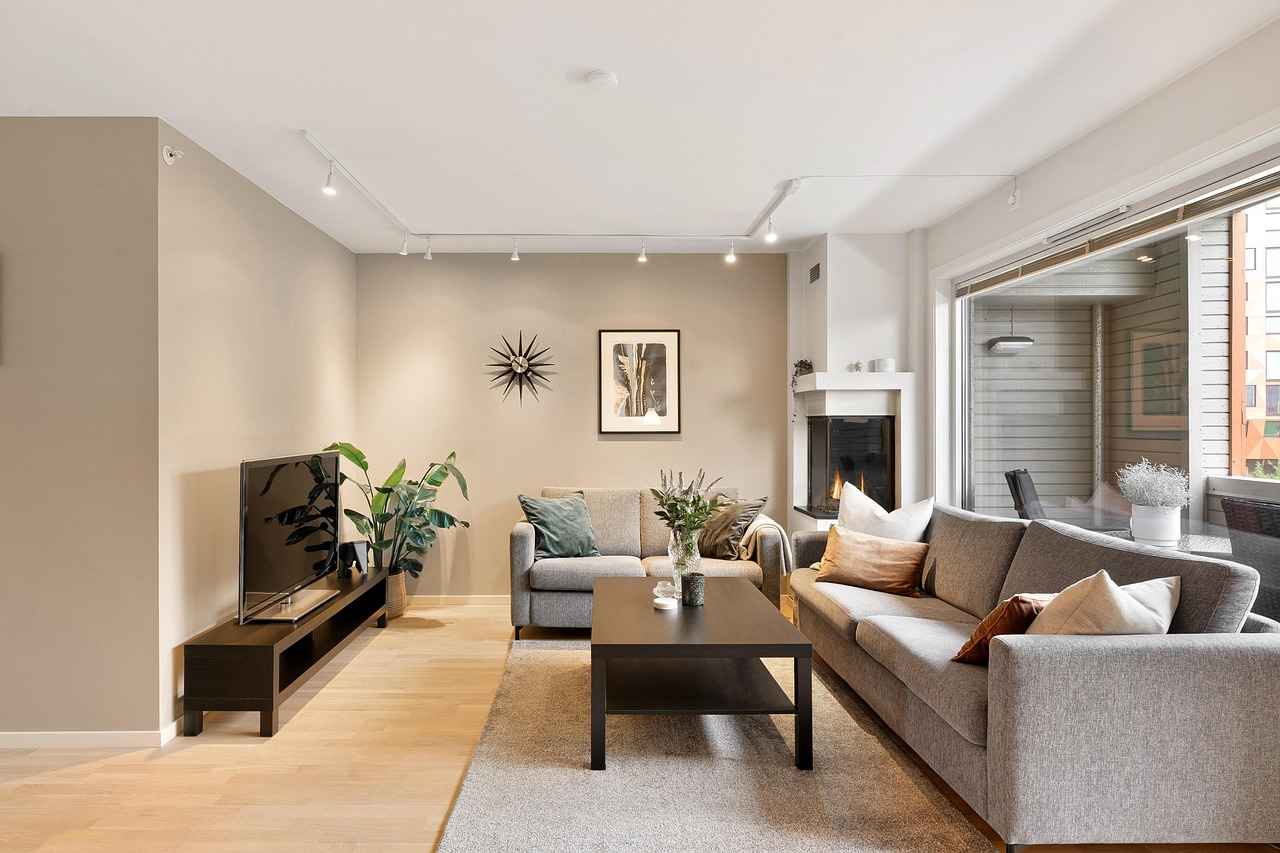
Stylish Floor Bed Design Ideas
Transforming your bedroom into a cozy sanctuary can be achieved through the creative use of floor beds. These minimalist sleeping arrangements not only save space but also serve as a stunning focal point in your room. Below are some innovative design ideas that seamlessly blend comfort and aesthetics, ensuring your floor bed becomes the centerpiece of your interior design.
- Bohemian Bliss: Embrace the eclectic charm of bohemian decor by incorporating vibrant textiles and layered bedding. A floor bed adorned with colorful throws, patterned cushions, and macramé wall hangings can create an inviting atmosphere. Consider using a natural fiber rug to enhance the cozy feel.
- Modern Minimalism: For those who prefer a clean and uncluttered look, a minimalist floor bed setup is ideal. Choose a low-profile mattress and pair it with neutral bedding. Add a few geometric decor pieces and a simple bedside table for functionality without overwhelming the space.
- Nature-Inspired Retreat: Bring the outdoors in by using natural materials and earthy tones. A wooden bed frame can complement a floor bed beautifully. Incorporate potted plants, such as succulents or ferns, to add life and freshness to your design.
- Scandinavian Serenity: Scandinavian design emphasizes simplicity and functionality. A floor bed with a light-colored mattress and soft linens can create a serene sleeping environment. Use soft lighting and minimalist decor to enhance the cozy vibe.
- Industrial Edge: For a more urban feel, consider an industrial-style floor bed. Use metal frames and pair them with a thick, comfortable mattress. Exposed brick walls and vintage light fixtures can complete this edgy look.
- Layered Textures: Mixing different textures can add depth to your floor bed design. Consider using a combination of cotton, linen, and faux fur in your bedding. Layering throws and pillows can create a luxurious and inviting appearance.
When designing your floor bed area, consider the layout of your room. Position the bed to maximize natural light and create a sense of openness. You can also use furniture arrangements that promote easy movement, ensuring that your space feels both functional and stylish.
Incorporating decorative elements around your floor bed can further enhance its appeal. Wall art, floating shelves, and unique lighting fixtures can draw attention to your sleeping area. Remember to choose accessories that reflect your personal style while maintaining a cohesive look throughout the room.
Ultimately, the key to a stylish floor bed design lies in balancing comfort and aesthetics. By exploring various styles and integrating your personal touches, you can create a space that is not only visually stunning but also a true reflection of your lifestyle.
Bohemian Style Floor Beds
are a captivating way to infuse your living space with a sense of creativity and comfort. This style emphasizes an eclectic mix of colors, patterns, and textures, making it perfect for those who appreciate individuality in their decor. Floor beds, which rest directly on the ground, can seamlessly integrate into a bohemian-inspired room, creating an inviting and relaxed atmosphere.
To begin with, color is a fundamental aspect of bohemian decor. When selecting bedding for your floor bed, consider vibrant hues and rich patterns that reflect your personality. Think about incorporating layers of colorful throws, patterned quilts, and an assortment of pillows in various shapes and sizes. This not only adds visual interest but also enhances comfort, inviting you to sink into your cozy sanctuary.
Another essential element of bohemian design is mixing and matching. Don’t shy away from combining different textures and materials. For instance, pair a soft, plush rug with a woven tapestry or a macramé wall hanging. These elements can create a warm and inviting backdrop for your floor bed, making the space feel lived-in and welcoming.
- Incorporate Natural Elements: Adding plants is a great way to enhance the bohemian vibe. Consider placing potted plants around the floor bed or hanging them from the ceiling. This brings a touch of nature indoors, which is a hallmark of bohemian style.
- Layering Textiles: Use a variety of textiles to create depth. Layering different fabrics, such as cotton, linen, and velvet, can make your floor bed area feel cozy and eclectic.
- Use Unique Furniture: Incorporate vintage or handmade furniture pieces that tell a story. A low table or a couple of poufs can serve as functional additions while maintaining the bohemian aesthetic.
When arranging your floor bed, consider its placement within the room. Position it near a window or in a corner to create a cozy nook. Use soft lighting, such as fairy lights or lanterns, to enhance the ambiance. This will not only make the space inviting but also create a serene environment for relaxation and sleep.
Moreover, don’t forget about the importance of personal touches. Display artwork, photographs, or souvenirs collected from your travels. These elements not only personalize your space but also contribute to the bohemian ethos of storytelling through decor.
In conclusion, incorporating a floor bed into a bohemian-inspired room can transform your space into a vibrant and inviting retreat. By focusing on color, texture, and personal style, you can create a unique sleeping area that reflects your individuality while providing comfort and warmth. Embrace the eclectic spirit of bohemian decor, and let your creativity shine through your floor bed design.
Minimalist Floor Bed Designs
In recent years, the trend of minimalism has gained significant traction, influencing various aspects of our lives, including interior design. embody the essence of simplicity and functionality, creating a serene and uncluttered sleeping environment. This article delves into how to create a floor bed setup that not only adheres to minimalist principles but also ensures comfort and style.
A floor bed, by definition, is a mattress placed directly on the floor, often without a traditional bed frame. This design choice promotes a sense of openness and freedom, allowing for a spacious feel in any room. To achieve a minimalist aesthetic, consider the following key elements:
- Color Palette: Stick to neutral colors such as whites, grays, and soft earth tones. These shades create a calming atmosphere and can make a room appear larger.
- Simple Bedding: Use minimalistic bedding that avoids excessive patterns or textures. Opt for high-quality, breathable materials that enhance comfort while maintaining a clean look.
- Functional Accessories: Incorporate only essential accessories, such as a simple bedside table or a small lamp. This keeps the space uncluttered and focused on relaxation.
Another aspect of minimalist floor bed designs is the incorporation of natural materials. Wooden platforms or bamboo mats can serve as a base for the mattress, adding warmth and texture to the setup. Additionally, integrating plants into the decor can enhance the overall ambiance. Choose low-maintenance indoor plants that not only purify the air but also add a touch of nature to your space.
When considering the layout of your room, think about how the floor bed interacts with other furniture. Positioning the bed away from walls can create a more inviting and open space. Furthermore, ensure that there is enough room to move around freely, which is essential for maintaining the minimalist ethos.
Choosing the right mattress is crucial for comfort in a floor bed setup. Memory foam mattresses are an excellent option due to their adaptability and support. Alternatively, consider organic cotton or latex mattresses, which are not only eco-friendly but also provide a firm yet comfortable sleeping surface. Pay attention to the thickness of the mattress; a thinner option can align better with minimalist aesthetics while still providing adequate support.
In summary, designing a minimalist floor bed setup involves careful consideration of color, materials, and layout. By focusing on simplicity and functionality, you can create a cozy and stylish sleeping area that embodies the principles of minimalism. This approach not only enhances the visual appeal of your room but also promotes a sense of tranquility and relaxation, making it an ideal sanctuary for rest.
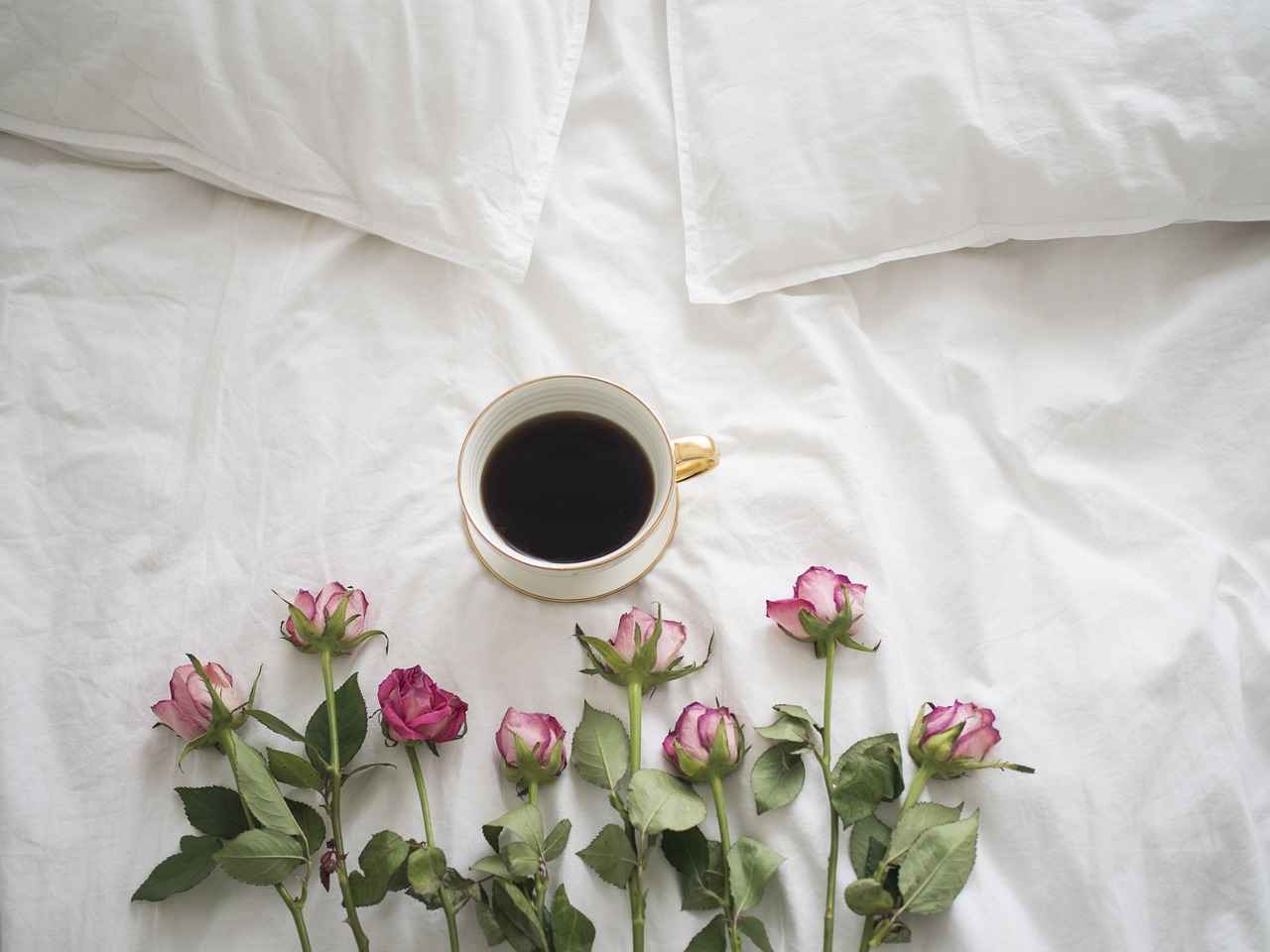
Choosing the Right Mattress for Floor Beds
When it comes to creating a cozy and restful sleeping environment, choosing the right mattress for your floor bed is essential. A well-selected mattress not only enhances comfort but also contributes to the overall aesthetic of your room. In this section, we will explore various mattress types, thickness and firmness considerations, and how to ensure a good night’s sleep on your floor bed.
There are several types of mattresses that work well with floor beds, each offering unique benefits:
- Memory Foam Mattresses: Known for their contouring ability, memory foam mattresses provide excellent support and pressure relief. They are ideal for those who prefer a softer feel while still needing adequate support.
- Latex Mattresses: These mattresses are durable and offer a responsive feel. Natural latex is breathable, making it a great option for those who tend to sleep hot.
- Futon Mattresses: Traditionally used in Japanese-style floor beds, futon mattresses are versatile and can be easily folded and stored. They tend to be firmer, which can be beneficial for back support.
- Innerspring Mattresses: If you prefer a more traditional feel, innerspring mattresses can provide good support and breathability. Look for options with a low profile to complement the floor bed design.
The thickness and firmness of your mattress are critical factors in determining overall comfort. Here are some guidelines to help you choose:
- Thickness: Ideally, a mattress should be at least 6 inches thick to provide adequate support. Thicker mattresses can offer more cushioning but may also require a sturdier base.
- Firmness: Personal preference plays a significant role in firmness selection. Those who sleep on their back or stomach may prefer a firmer mattress, while side sleepers often benefit from a softer option that relieves pressure on the hips and shoulders.
Additionally, consider your sleeping position and any specific health concerns when selecting your mattress. For instance, individuals with back pain might find that a medium-firm mattress offers the best balance of support and comfort.
When choosing a mattress for your floor bed, also think about the following:
- Material: Natural materials like cotton or wool can enhance breathability and comfort, while synthetic materials may offer better moisture-wicking properties.
- Allergies: If you have allergies, consider hypoallergenic options that resist dust mites and mold.
- Budget: Quality mattresses can vary significantly in price. Set a budget that allows you to invest in a mattress that meets your comfort and durability needs.
Ultimately, selecting the right mattress for your floor bed is a personal journey that requires careful consideration of your comfort preferences and lifestyle. By understanding the various types of mattresses available and their respective benefits, you can create a peaceful and inviting sleeping space that promotes restful nights and rejuvenating mornings.
Types of Mattresses Suitable for Floor Beds
When it comes to creating a comfortable and inviting floor bed setup, the choice of mattress is crucial. Different mattress types can significantly influence the overall comfort and support provided by a floor bed. In this section, we will explore the pros and cons of various mattress options, including memory foam and futon mattresses, to help you make an informed decision.
Memory foam mattresses are renowned for their ability to conform to the body’s shape, providing personalized support and pressure relief. This feature makes them an excellent option for those who suffer from joint pain or discomfort during sleep. Here are some advantages and disadvantages:
- Pros:
- Excellent pressure relief and support.
- Minimizes motion transfer, making it ideal for couples.
- Available in various thicknesses for personalized comfort.
- Cons:
- Can retain heat, making them uncomfortable in warmer climates.
- Some models may have a strong initial odor.
- Generally heavier and more challenging to move.
Futon mattresses offer a versatile and space-saving option for floor beds. Traditionally used in Japanese-style bedding, futons can be folded and stored away when not in use. Here are the pros and cons of futon mattresses:
- Pros:
- Lightweight and easy to store, perfect for small spaces.
- Often made from natural materials, offering breathability.
- Can be used as both a bed and a couch, enhancing functionality.
- Cons:
- May not provide enough support for heavier individuals.
- Thinner options may feel uncomfortable for some users.
- Requires regular maintenance to maintain shape and comfort.
Latex mattresses are another popular choice for floor beds, known for their durability and natural materials. They provide a firmer sleeping surface and are often hypoallergenic. Here are their advantages and disadvantages:
- Pros:
- Highly durable and resistant to sagging.
- Good airflow, keeping you cool during sleep.
- Natural latex is eco-friendly and hypoallergenic.
- Cons:
- Can be more expensive compared to other mattress types.
- Heavier and more difficult to move.
- May feel too firm for those who prefer a softer sleeping surface.
Hybrid mattresses combine the features of memory foam and innerspring systems, offering a balance of comfort and support. They are designed to provide the best of both worlds:
- Pros:
- Offers a balanced feel with both support and cushioning.
- Good airflow due to the coil system, preventing overheating.
- Suitable for a variety of sleeping positions.
- Cons:
- Can be heavier and more challenging to move than all-foam options.
- May come at a higher price point.
- Quality can vary significantly between brands.
In summary, selecting the right mattress for your floor bed is essential for ensuring a restful night’s sleep. Consider your personal preferences and specific needs when evaluating options like memory foam, futon, latex, or hybrid mattresses. Each type has unique benefits and drawbacks that can affect your overall comfort and satisfaction.
Thickness and Firmness Considerations
When it comes to floor beds, mattress thickness and firmness are critical factors that significantly influence your overall comfort and sleep quality. Understanding these specifications can help you make an informed decision that aligns with your personal sleeping preferences and lifestyle.
Understanding Mattress Thickness
The thickness of a mattress typically ranges from 6 inches to 14 inches. Thicker mattresses often provide more cushioning, which can be beneficial for those who prefer a softer sleeping surface. However, it is essential to consider the following:
- Body Weight: Heavier individuals may find that a thicker mattress offers better support and reduces the risk of sinking too deeply.
- Sleeping Position: Side sleepers might prefer a thicker mattress to alleviate pressure on their hips and shoulders, while back and stomach sleepers may benefit from a thinner option that promotes spinal alignment.
- Bed Frame Compatibility: Ensure that your floor bed setup can accommodate the thickness of your chosen mattress without compromising stability.
Exploring Mattress Firmness
Firmness is another crucial aspect to consider. Mattresses are generally rated on a scale from 1 (softest) to 10 (firmest). Here’s how to determine the right firmness level for you:
- Personal Preference: Some individuals prefer a plush feel, while others favor a firmer surface. Testing different mattresses can help you identify what feels best.
- Support Needs: If you experience back pain, a medium-firm mattress (around 5-7) may provide the right balance of support and comfort.
- Temperature Regulation: Firmer mattresses often promote better airflow, which can help keep you cool during the night.
Combining Thickness and Firmness
Finding the right combination of thickness and firmness is essential for achieving optimal comfort. Here are some tips for selecting the ideal mattress:
- Test Before You Buy: Whenever possible, try out the mattress in-store. Lie down in your usual sleeping position to gauge comfort and support.
- Consider Your Partner: If you share a bed, factor in your partner’s preferences as well. A mattress with a dual firmness option might be the best solution.
- Read Reviews: Look for customer feedback on specific mattresses to see how they perform in real-world scenarios.
In summary, the thickness and firmness of a mattress are pivotal in determining the overall comfort of your floor bed. By carefully considering your personal needs and preferences, you can select a mattress that not only enhances your sleep experience but also complements your floor bed setup.
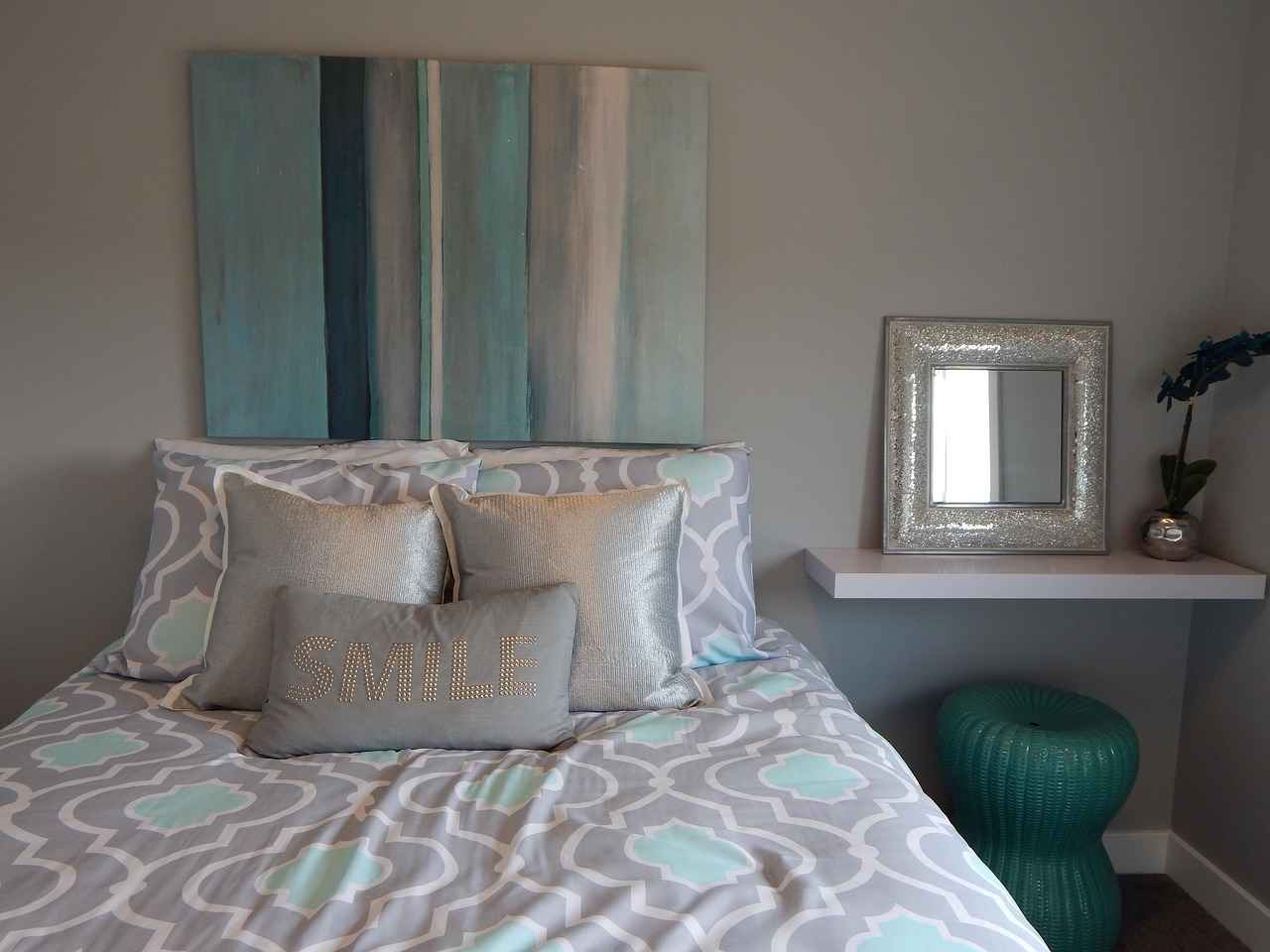
Decorating Around Floor Beds
Creating a cohesive look around floor beds enhances the overall aesthetic of your space. To achieve maximum comfort and style, it’s essential to consider various elements of decor and design. This section provides practical tips to help you accessorize your room effectively.
The choice of textiles plays a crucial role in the overall look and feel of your floor bed setup. Consider using soft, breathable fabrics for your bedding, such as cotton or linen. These materials not only offer comfort but also add a touch of elegance to your room. When selecting bedding, aim for a color palette that complements the rest of your decor. Neutral tones can create a calming atmosphere, while vibrant hues can inject energy into the space.
Layering your bedding can add depth and texture to your floor bed. Start with a fitted sheet, followed by a cozy blanket, and finish with decorative throws or cushions. Pillows in various sizes and shapes can enhance comfort and visual interest. Consider mixing patterns and textures to create a unique and inviting look that reflects your personal style.
Bringing in natural elements can significantly enhance the cozy feel of your floor bed setup. Incorporate plants, such as succulents or ferns, to add a touch of greenery. Not only do plants purify the air, but they also create a tranquil environment. Additionally, consider using organic materials like wooden furniture or woven baskets to maintain a harmonious and earthy aesthetic.
Lighting is a vital component in creating ambiance around your floor bed. Use a combination of ambient, task, and accent lighting to create a warm and inviting atmosphere. Soft, warm-toned light bulbs can make the space feel cozy, while adjustable lamps can provide focused light for reading or other activities. String lights or fairy lights can also add a whimsical touch, creating a dreamy environment.
Consider adding functional furniture pieces that complement your floor bed while maximizing space. A low-profile nightstand can provide storage without overwhelming the room. Alternatively, use a bench or ottoman at the foot of the bed for additional seating and storage. Ensure that the furniture aligns with the overall design theme, whether it’s minimalist, bohemian, or modern.
Wall decor can significantly impact the overall aesthetic of your space. Choose artwork or photographs that resonate with your style and enhance the atmosphere. Consider using a gallery wall to showcase your favorite pieces, or opt for a large statement piece above the bed to draw the eye. Mirrors can also be a great addition, as they create an illusion of space and reflect light, making the room feel larger and more open.
To keep your floor bed area looking stylish and inviting, it’s essential to maintain a clutter-free environment. Utilize storage solutions like under-bed drawers or decorative baskets to keep items organized and out of sight. Regularly declutter the space to ensure it remains a peaceful retreat. A tidy room not only looks better but also contributes to a more relaxing atmosphere.
In conclusion, decorating around floor beds involves careful consideration of textiles, natural elements, lighting, and furniture. By following these tips, you can create a cohesive and stylish environment that maximizes comfort while reflecting your personal aesthetic.
Textiles and Color Schemes
When it comes to designing a floor bed setup, textiles and color schemes play a pivotal role in creating a space that is both inviting and aesthetically pleasing. The right selection of bedding, throws, and decorative elements can elevate your floor bed’s design, transforming it into a cozy sanctuary. Below, we explore how to choose complementary textiles and colors to achieve a harmonious environment.
- Understanding Color Psychology: Colors can significantly influence mood and ambiance. Warm tones like reds and oranges can evoke feelings of warmth and comfort, while cool tones like blues and greens promote tranquility. When selecting colors for your floor bed area, consider the atmosphere you wish to create.
- Layering Textiles for Depth: To add dimension to your floor bed, layer different textiles. Start with a base layer of bedding, such as a soft duvet or quilt. Then, incorporate various textures through throws, cushions, and blankets. This layering technique not only enhances comfort but also provides visual interest.
- Choosing Complementary Patterns: Mixing patterns can be a fun way to express your style. However, it’s essential to maintain a cohesive look. Aim for a mix of patterns that share a common color palette. For example, pairing a floral print with geometric designs in similar hues can create a balanced and harmonious space.
- Natural Fabrics: Opt for textiles made from natural materials such as cotton, linen, or wool. These fabrics are breathable and comfortable, making them ideal for bedding. Additionally, they often have a more organic look, which can enhance the cozy feel of your floor bed setup.
- Accent Colors and Accessories: Use accent colors to tie your space together. Incorporate decorative pillows, rugs, and wall art that complement your main color scheme. These elements can add personality and flair to your floor bed area, making it uniquely yours.
Furthermore, consider the seasonal changes when selecting textiles. In warmer months, lighter fabrics and brighter colors can create a refreshing atmosphere, while in colder months, heavier materials and deeper hues can provide warmth and comfort. Regularly updating your textiles can keep your space feeling fresh and inviting.
Finally, don’t forget about the importance of lighting in enhancing your color scheme. Soft, warm lighting can make colors appear more inviting and cozy, while harsh lighting can detract from the overall ambiance. Incorporate various light sources, such as lamps and fairy lights, to create a warm glow around your floor bed.
By thoughtfully selecting textiles and colors, you can create a floor bed setup that is not only stylish but also exudes comfort and warmth. Whether you prefer a minimalist approach or a more eclectic style, the right choices in textiles and color can transform your space into a personal retreat.
Incorporating Natural Elements
Incorporating natural elements into your floor bed setup not only enhances the cozy atmosphere but also promotes a sense of well-being and harmony within your space. Natural materials and greenery can transform a simple floor bed into a sanctuary of relaxation and tranquility. Here, we explore various ways to seamlessly integrate these elements into your design.
- Plants as Decorative Accents: Introducing plants into your floor bed area can significantly elevate the overall aesthetic. Choose low-maintenance indoor plants like snake plants, pothos, or peace lilies that thrive in various lighting conditions. Not only do they add a splash of color, but they also improve indoor air quality, creating a healthier environment.
- Natural Textiles: Opt for bedding and decor made from organic materials such as cotton, linen, or hemp. These fabrics are not only sustainable but also provide a soft and inviting feel. Consider using a woven throw blanket or handmade cushions to add texture and warmth to your floor bed setup.
- Wooden Elements: Incorporating wooden furniture or accents can enhance the natural vibe of your space. A reclaimed wood bedside table or a wooden tray can serve as a functional yet stylish addition. The warmth of wood complements the softness of textiles, creating a balanced look.
- Earthy Color Palettes: When choosing colors for your decor, lean towards earthy tones like greens, browns, and creams. These colors can evoke a feeling of nature within your room. Consider painting an accent wall in a soft green or using natural-colored rugs to ground the space.
- Natural Lighting: Make the most of natural light by positioning your floor bed near windows. This not only brightens your space but also connects you with the outdoors. Use sheer curtains to allow light to filter in while maintaining privacy.
- Organic Accessories: Incorporate decorative items such as stone sculptures, driftwood, or pottery made from natural materials. These accessories can serve as conversation starters and enhance the organic feel of your room.
To achieve a cohesive look, consider the layout of your floor bed in relation to these natural elements. Positioning plants at varying heights, using floating shelves for decor, or placing a small wooden bench at the foot of the bed can create a visually appealing arrangement.
Moreover, maintaining these natural elements is crucial for longevity. Regularly check on your plants, ensuring they receive adequate light and water. For textiles, follow care instructions to keep them looking fresh and inviting. Wooden items should be treated with appropriate oils or waxes to preserve their beauty.
In summary, integrating natural elements into your floor bed setup is a fulfilling way to enhance comfort and aesthetics. By thoughtfully selecting plants, textiles, and accessories, you can create a harmonious environment that promotes relaxation and well-being.
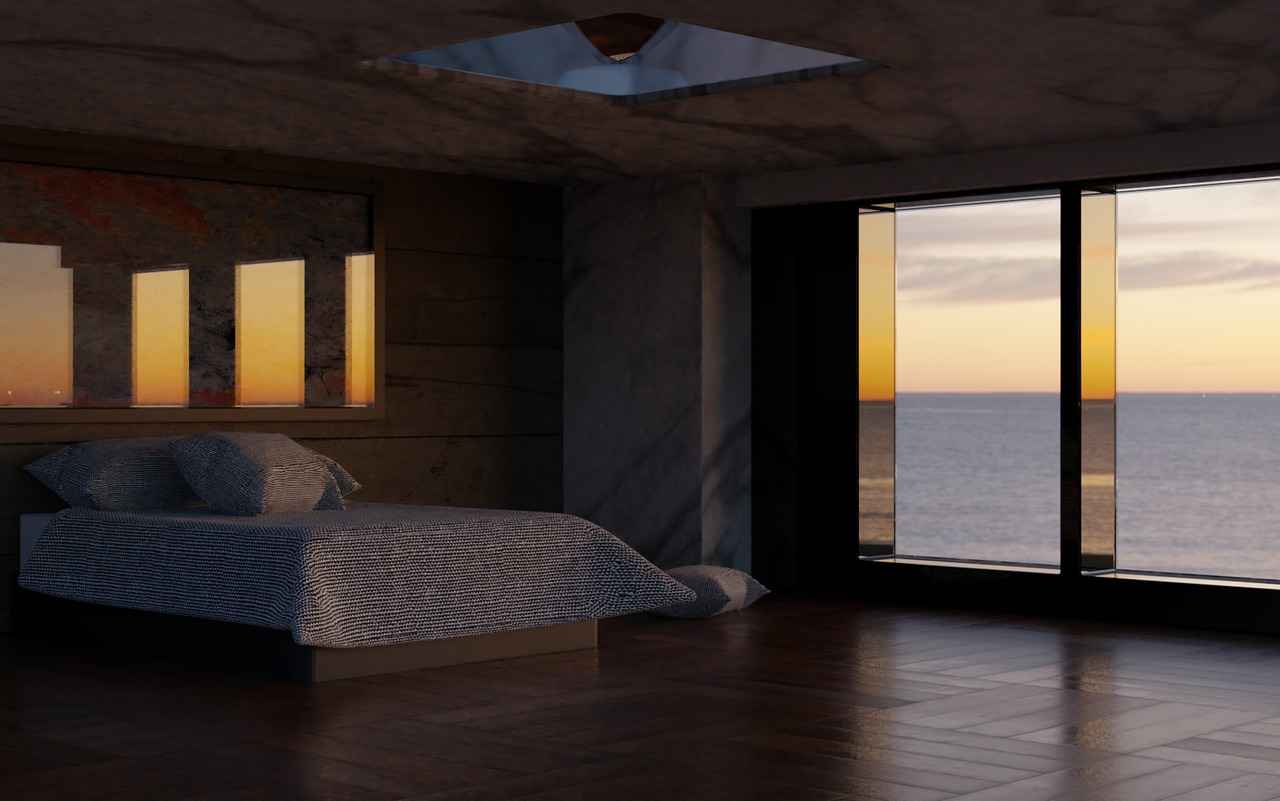
Maintenance Tips for Floor Beds
Maintaining your floor bed is crucial for ensuring its longevity and comfort. A well-cared-for floor bed not only enhances the aesthetic of your room but also contributes to a healthier sleeping environment. This section provides practical tips to keep your floor bed and its surrounding area clean and comfortable.
To maintain a hygienic sleeping space, it’s essential to establish a regular cleaning routine. Here are some effective practices:
- Vacuuming: Use a vacuum cleaner with a brush attachment to remove dust and debris from the mattress and surrounding area at least once a week.
- Spot Cleaning: Address spills and stains immediately by using a mild detergent and a soft cloth. This prevents stains from setting in.
- Deep Cleaning: Every few months, consider deep cleaning your mattress. Check the manufacturer’s guidelines for suitable cleaning methods.
The mattress is the heart of your floor bed setup. To ensure it remains comfortable and supportive:
- Rotate Regularly: Rotate your mattress every three to six months to promote even wear and prolong its lifespan.
- Use a Mattress Protector: A waterproof and hypoallergenic mattress protector can safeguard against spills, allergens, and dust mites.
- Air Out the Mattress: Occasionally remove the mattress from its base to air it out, allowing moisture to escape and preventing mold growth.
A clean and organized space around your floor bed contributes significantly to your overall comfort. Consider the following:
- Declutter Regularly: Keep the area around your floor bed free from unnecessary items. A tidy space promotes relaxation.
- Textiles and Fabrics: Regularly wash bedding and any textiles in the vicinity, such as throws and cushions, to maintain freshness.
- Natural Elements: Incorporate plants and natural materials into your decor. They not only enhance aesthetics but also improve indoor air quality.
Seasonal changes can affect your floor bed’s condition. Here are some tips to consider:
- Winter Care: In colder months, ensure your bed is insulated with warm bedding. Consider using a heated mattress pad for extra comfort.
- Summer Care: In warmer months, use breathable materials for bedding to keep cool. Regularly air out your mattress to prevent moisture buildup.
By following these maintenance tips, you can ensure that your floor bed remains a cozy and inviting space for years to come. Regular cleaning, proper mattress care, and thoughtful organization of your surroundings will contribute to a healthier and more comfortable sleeping environment.
Frequently Asked Questions
- What are the main benefits of using a floor bed?
Floor beds offer a range of benefits, including maximizing space, enhancing comfort, and promoting accessibility. They create a cozy atmosphere and can be a stylish addition to any room, especially in smaller living spaces.
- How do I choose the right mattress for my floor bed?
When selecting a mattress for your floor bed, consider factors such as thickness, firmness, and material. Memory foam and futon mattresses are popular choices, offering comfort and support tailored to your sleeping preferences.
- Can floor beds work in small rooms?
Absolutely! Floor beds are perfect for small rooms as they create an open and airy feel. They can be arranged in various layouts to maximize space without compromising on style or comfort.
- How can I decorate around my floor bed?
To enhance your floor bed’s aesthetic, choose complementary textiles and colors. Incorporating natural elements like plants can also elevate the cozy vibe of your space, making it feel inviting and harmonious.
- What maintenance tips should I follow for my floor bed?
Regular cleaning and proper care are essential for maintaining your floor bed. Ensure you keep the area dust-free and wash bedding frequently to prolong its life and keep it comfortable.














